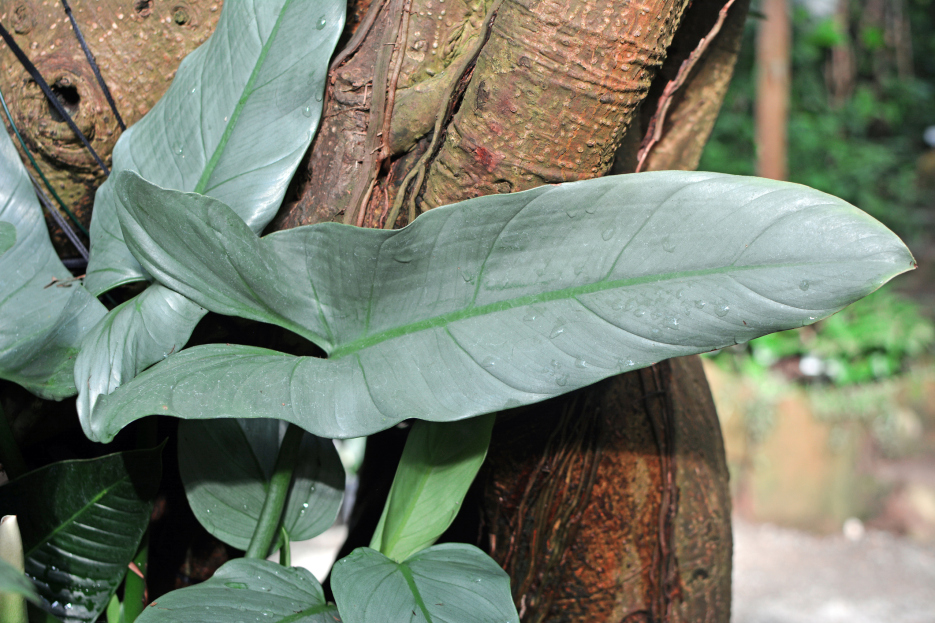
The Philodendron Hastatum, also known as the Silver Sword due to its striking silver-blue foliage, is a stunning tropical houseplant native to South America. This vining plant is a favorite among plant enthusiasts for its easy care and unique appearance. Whether you’re a seasoned plant parent or a beginner, the Philodendron Hastatum can thrive in your home with the right care. Here's everything you need to know about keeping your Silver Sword happy and healthy.
Philodendron Hastatum thrives in bright, indirect light. While it can tolerate lower light conditions, its growth will slow down, and the vibrant silver hues of its leaves may become less pronounced. For optimal growth, place your Silver Sword near a bright window with filtered light, such as east or west-facing windows. Avoid direct sunlight, as it can scorch the leaves, leading to brown spots and damage. If you don’t have a bright spot, you can also grow the plant under grow lights to ensure it gets enough light.
Like most philodendrons, the Silver Sword prefers to dry out between waterings. To prevent overwatering, wait until the top 1-2 inches of soil feel dry before watering. During its growing season (spring and summer), the plant may require more frequent watering, but in the fall and winter, when its growth slows, you can water less frequently.
Make sure your pot has proper drainage to avoid waterlogging, which can lead to root rot. If the leaves start to yellow, it may be a sign of overwatering, while wilting or crispy edges could indicate underwatering. Always check the moisture level in the soil before watering to avoid these issues.
Philodendron Hastatum prefers warm temperatures between 65°F and 80°F (18°C to 27°C). It’s important to keep your plant in an area that doesn’t experience sudden temperature changes or cold drafts, as this can cause stress and damage to the plant. The Silver Sword can tolerate occasional dips in temperature, but it’s best to avoid temperatures below 50°F (10°C).
This plant also enjoys moderate to high humidity levels. If the air in your home is dry, especially in winter, you can increase humidity by misting the leaves, using a humidity tray, or placing the plant in a more humid room, such as a bathroom or kitchen. A humidifier can also be a great way to maintain the right moisture level for your plant.
Philodendron Hastatum prefers well-draining, rich soil. A standard potting mix with added perlite or orchid bark works well, as it allows for good drainage and prevents the roots from sitting in water. The plant also benefits from a slightly acidic to neutral pH level (around 6.0 to 7.0).
During the growing season, you can feed your Silver Sword once a month with a balanced liquid fertilizer diluted to half strength. This will support healthy growth and vibrant foliage. In the fall and winter, when the plant is dormant, you can stop fertilizing, as it doesn’t require extra nutrients during this time.
Philodendron Hastatum is a vining plant, and it can grow quite long if left unchecked. To keep it looking neat and encourage bushier growth, you can prune back the stems. Use clean, sharp scissors or pruning shears to cut back any long or leggy growth. You can also propagate the cuttings by placing them in water or soil to create new plants.
Removing dead or yellowing leaves is also a good practice to maintain the plant’s appearance and overall health. This will help prevent any diseases or pests from affecting the plant.
Repotting your Philodendron Hastatum is typically needed every 1-2 years, depending on its growth. When the plant becomes root-bound, or when the soil starts to degrade, it’s time to move it into a larger pot. Choose a pot that is 1 to 2 inches larger in diameter than the current one to allow the roots to grow comfortably.
Repot your plant in the spring or early summer when the plant is actively growing. Be sure to use fresh, well-draining soil to provide the best environment for the roots to thrive. After repotting, avoid watering the plant for a few days to let the roots settle in.
Unfortunately, Philodendron Hastatum is not pet safe. Like other philodendrons, it contains calcium oxalate crystals, which can cause irritation to pets if ingested. Symptoms of poisoning in pets may include drooling, vomiting, and difficulty swallowing. Keep your plant out of reach of curious pets to avoid any potential issues. If you have pets that tend to chew on plants, you might want to consider choosing a pet-safe alternative.
Philodendron Hastatum is easy to propagate through stem cuttings. To propagate, simply take a healthy cutting that includes a node (the small bump on the stem where leaves or roots grow). Place the cutting in water or soil, and it should root within a few weeks.
If propagating in water, change the water regularly to prevent stagnation, and once the roots are a few inches long, you can transplant the cutting into soil. Keep the new plant in a warm, bright spot to encourage healthy growth.